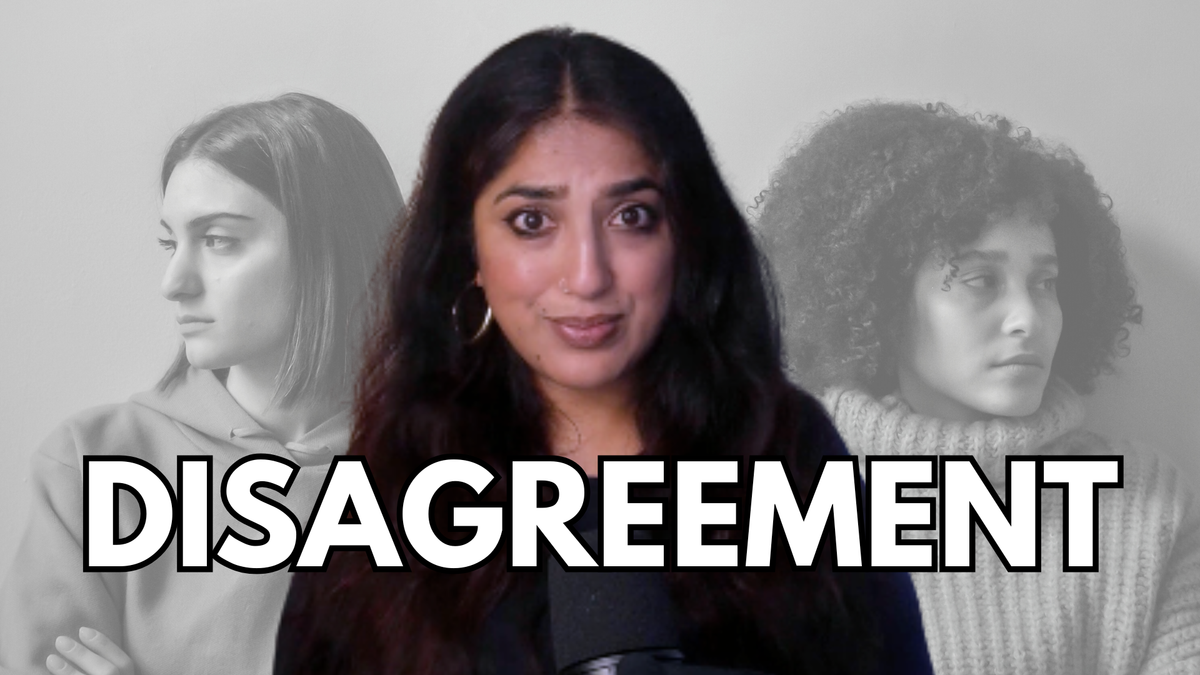When stakeholders don’t agree

How to navigate interdependencies with strategy and not emotion
Video option above!
Let’s talk about when people don’t agree. Let’s look at your stakeholders. Whether it’s a client, collaborator, sponsor, investor, or community member - if they have different opinions please remember it’s not a failure, it’s actually data.
If there’s tension - that’s inevitable. And if you can figure out how to read tension, it becomes one of your most useful strategic skills to grow and also, demonstrate as expertise when needed.
Let’s look at my strategic zone 2: Interdependencies and stakeholder mapping. And if you want to get familiar with each of my 7 strategic zones you can find a dedicated playlist for each!
When looking at any issue we can super focus on that one area but also see how it connects and interrelates with other areas of the brand and business… and that’s why I have 7 areas, 7 zones to build our greater awareness and also specific skills for each.
Here’s a reminder of them:
Zone 1: Strategic self-awareness
Zone 2: Interdependencies and stakeholder mapping
Zone 3: Risk readiness and reputation design
Zone 4: Media literacy and zeitgeist awareness
Zone 5: Engagement system and content architecture
Zone 6: Your north star and value compass
Zone 7: Reflexive thinking and the bricoleur mindset
Spotting how they connect and interrelate is useful and necessary to do when things feel stuck and misaligned. We know this from our personal lives. When we hyper focus on the 1 or 2 parts of a problem it becomes more challenging to find a solution - an innovative one. When we zoom out to take in the whole picture and potentially spot patterns (and systems) we can begin to tweak from a higher level and understand what’s driving those 1 or 2 parts. What’s hindering them.
So zone 2: Stakeholders often come with different lenses, agendas, or KPIs. And that’s normal. But here’s where things fall apart:
People forget about or ignore the system they’re operating within. They treat a disagreement like it’s personal, when it’s possible that it’s positional. It’s based on where each person sits in the ecosystem. That’s why systems thinking matters and is so useful in situations of conflict.
Do you agree with this statement?: Everyone’s behaviour makes sense in context. Even if it frustrates you.
Instead of trying to win the argument or avoid the conflict, how about doing the following more useful things.
Here are 3 tangible solutions to resolve stakeholder misalignment.
1. Revisit the system map — and if you do it together, even better.Most of the time, you’re misaligned not because the other person is wrong, but because you’re working off different assumptions about the project, the audience, or the timeline.
Solution: Lay out your stakeholder map. Identify the interdependencies. Where are you expecting alignment that hasn’t actually been agreed upon?
2. Zoom out to the shared goal.This is where Zone 6 comes in - your North Star and Value Compass. If you can’t get alignment on a tactic, go higher. Ask: “Can we agree on the outcome we’re aiming for? What does success look like to you?”
If you can agree on the outcome, you can negotiate the pathway. Find and define your shared interest, your shared goal.
3. Assign decision weights, not just roles. This is quite powerful!Not every voice carries the same strategic weight in every decision - do you agree?
That doesn’t mean you ignore people - but it means you get clear on whose voice drives, whose voice guides, and whose voice needs to be heard, but not necessarily deferred to.
It’s not a majority and minority voice thing. It’s about identifying who has a higher stake in the situation. Who is the vital stakeholder here.
Solution: Clarify the decision rights before you need them - who carries the most strategic weight and has the most significant voice. That’s risk readiness from Zone 3 — designing how reputational and operational decisions get made before there’s friction - and before there’s a crisis.
And let’s be real. A lot of stakeholder tension comes from unspoken expectations. You can say the same about relationships in all facets of our life. From people operating off internal scripts or working with their version of urgency or what they think “professionalism” means. Remember, everyone has their own position and their own version of events.
This is where Zone 1: Strategic Self-Awareness matters.How you respond in conflict, what stories you tell yourself about others’ behaviour - all of that affects how well you show up in all stakeholder dynamics.
If you’re in a moment of stakeholder tension right now - here’s what you can do:
- Step back. Map the system.
- Identify what’s assumed, what’s actually been agreed to, and what’s missing.
- Zoom out to the shared objective.
- And assign decision weights clearly — don’t wait for conflict to force that clarity.
Here’s the truth:Your ability to manage stakeholder tension with clarity is directly tied to your long-term credibility. Not just the success of your campaign, your project, and your business.
And here’s a controversial take: you don’t need to agree on everything to move forward. You just need to design better systems for the tension. That’s the real power of Zone 2 - of Stakeholders and interdependencies. The rest of your strategy will thank you for it.
If this helped then please do share it with someone you collaborate with or wish to work with.And again, if you want more on my 7 Zones, I’ve got an episode and playlist for each one — including additional playlists for other focused creator economy areas like my “5 days of PR’ or “YouTube” series.
Thanks for your time and attention - the most vital resource you have. I appreciate it.
Comments ()